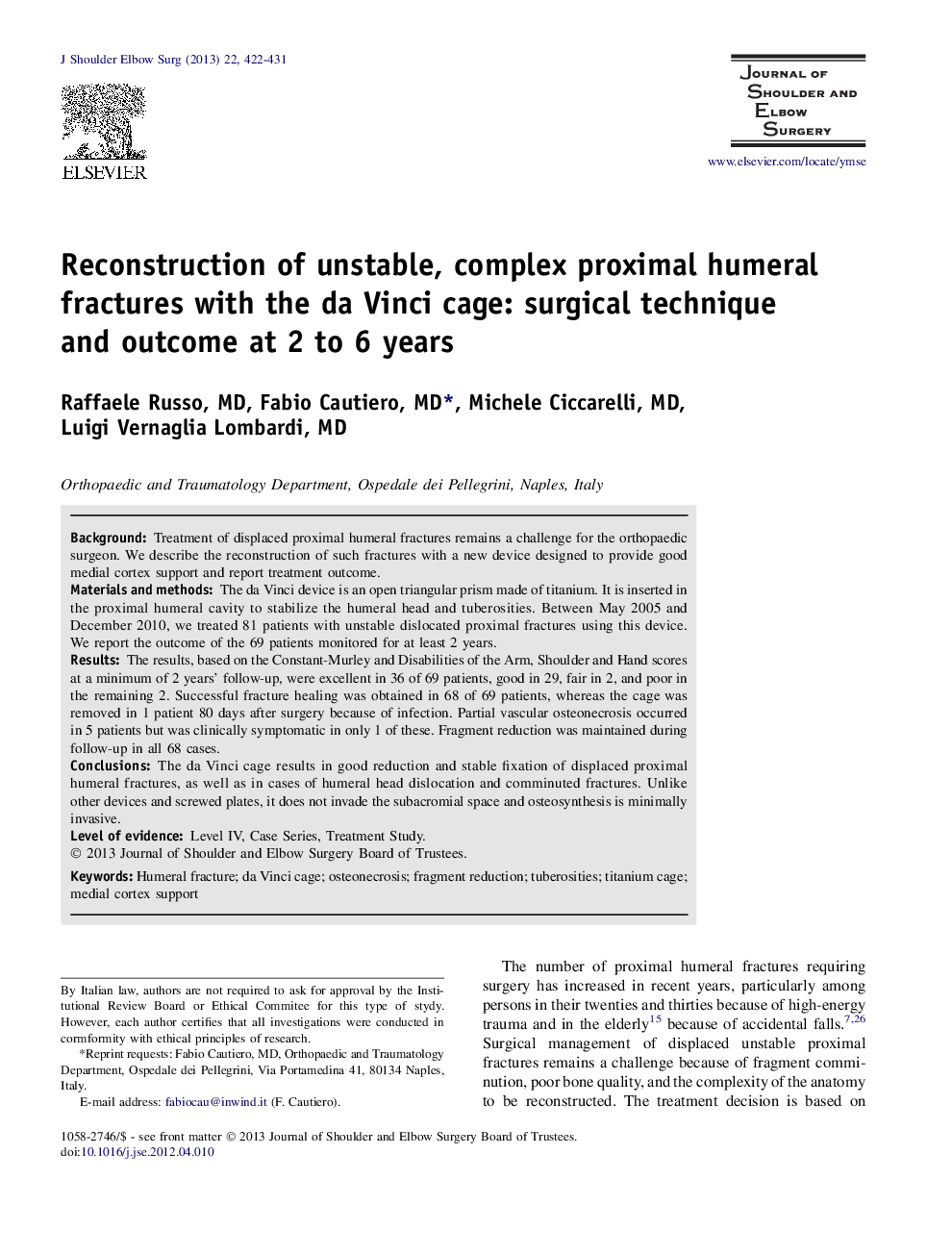| Article ID | Journal | Published Year | Pages | File Type |
|---|---|---|---|---|
| 4075213 | Journal of Shoulder and Elbow Surgery | 2013 | 10 Pages |
BackgroundTreatment of displaced proximal humeral fractures remains a challenge for the orthopaedic surgeon. We describe the reconstruction of such fractures with a new device designed to provide good medial cortex support and report treatment outcome.Materials and methodsThe da Vinci device is an open triangular prism made of titanium. It is inserted in the proximal humeral cavity to stabilize the humeral head and tuberosities. Between May 2005 and December 2010, we treated 81 patients with unstable dislocated proximal fractures using this device. We report the outcome of the 69 patients monitored for at least 2 years.ResultsThe results, based on the Constant-Murley and Disabilities of the Arm, Shoulder and Hand scores at a minimum of 2 years’ follow-up, were excellent in 36 of 69 patients, good in 29, fair in 2, and poor in the remaining 2. Successful fracture healing was obtained in 68 of 69 patients, whereas the cage was removed in 1 patient 80 days after surgery because of infection. Partial vascular osteonecrosis occurred in 5 patients but was clinically symptomatic in only 1 of these. Fragment reduction was maintained during follow-up in all 68 cases.ConclusionsThe da Vinci cage results in good reduction and stable fixation of displaced proximal humeral fractures, as well as in cases of humeral head dislocation and comminuted fractures. Unlike other devices and screwed plates, it does not invade the subacromial space and osteosynthesis is minimally invasive.
